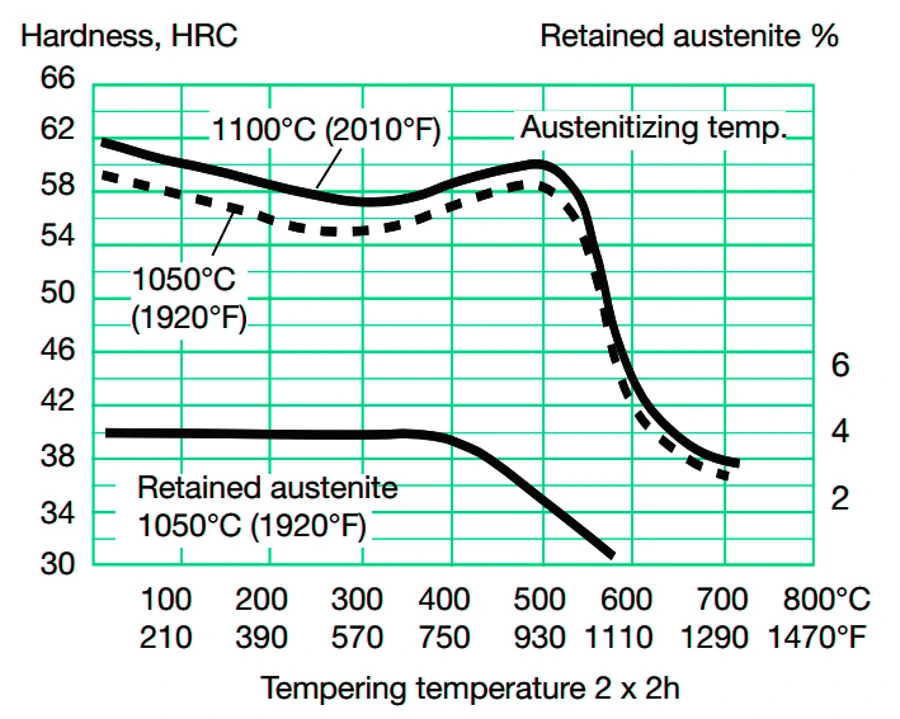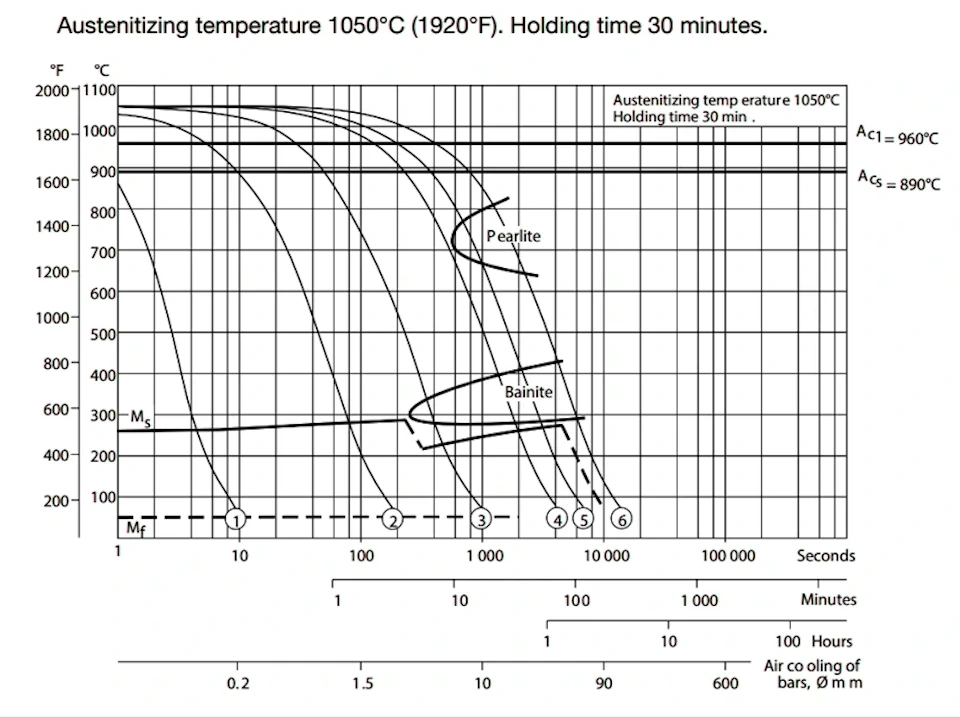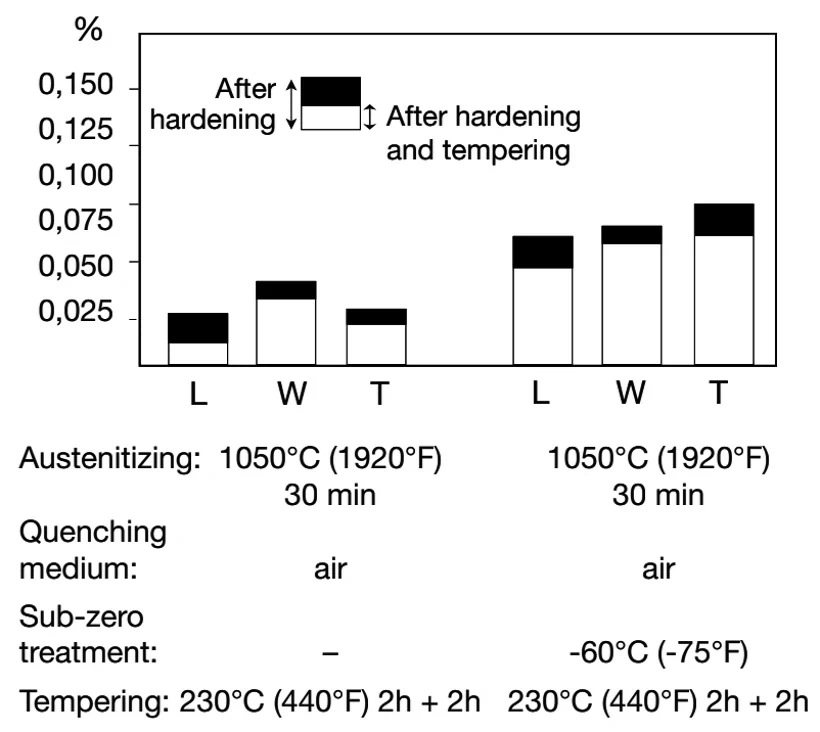Elmax Stainless Steel | Uddeholm Elmax SuperClean is a high-quality stainless steel produced by the Uddeholm Group using powder metallurgy. It holds an edge well, is difficult to sharpen, and is quite strong. It is a very fine-grained steel, so it allows for very aggressive sharpening. It allows for hardening the material to 62 HRC while maintaining decent strength. Due to its high chromium content, it has high corrosion resistance.
ELMAX steel (stainless steel ELMAX) is a high-tech steel that is classified as a third-generation steel. It is one of the newest powder materials, and for quite a long time remains almost the optimal choice in terms of price / quality in the production of knives.
Elmax (Elmah steel) is stronger than S30V and has better edge holding than S35VN. It is produced using third generation stainless steel powder metallurgy. The grain size of the metal powder is very small.
Characteristics
Uddeholm Elmax SuperClean is a chromium-vanadium-molybdenum alloy steel with the following characteristics:
- High wear resistance
- High compressive strength
- Corrosion resistance
- Very good dimensional stability
High wear resistance is usually associated with low corrosion resistance and vice versa. However, Uddeholm Elmax SuperClean has achieved this unique combination of properties through powder metallurgy-based manufacturing. Uddeholm Elmax SuperClean offers the ability to produce durable, maintenance-free moulds for better overall moulding economy.
Chemical composition
Chemical composition of Elmax steel grade | ||||||||
| C | Cr | Mo | W | V | Mn | Si | Ni | Fe |
| 1,7 | 18 | 1,0 | 0,11 | 3,0 | 0,35 | 0,8 | 0,15 | Other |
Heat treatment
Soft annealing
Protect the steel and heat to 980 °C, holding time 2 hours. Then cool in the furnace at a rate of 20 °C/h to 850 °C. Holding time 10 hours. Slowly cool to 750 °C. Then freely in air.
Stress relieving
After rough machining, heat the workpiece to 650 °C, hold for 2 hours. Cool slowly to 500 °C, then freely in air.
Hardening
- Preheating temperature: 600 - 850 °C.
- Austenitization temperature: 1050 - 1100 °C, typically 1080 °C.
| Temperature °C | *Holding time in minutes | Hardness before tempering (HRC) |
| 1050 | 30 | 60 |
| 1020 | 30 | 61 |
*Holding time = time at austenitizing temperature after the tool is fully heated through.
Protect the part against decarburization and oxidation during hardening.
Tempering
Choose the tempering temperature according to the hardness required by reference to the tempering graph. Temper twice with intermediate cooling to room temperature, the preferred tempering temperature is 250 °C or higher. In exceptional cases, a minimum tempering temperature of 180 °C can be used for small simple inserts and parts where toughness is of less importance. Holding time at tempering temperature minimum 2 hours.

Above tempering curves are obtained after heat treatment of samples with a size of 15x15x40 mm, cooling in forced air. Lower hardness can be expected after heat treatment of tools and dies due to factors like actual tool size and heat treatment parameters.
Phase diagram of continuous cooling ( CCT )
Austenitizing temperature 1050 °C (1920 °F). Holding time 30 minutes.

| Cooling curve no | Hardness HV10 | Т 800-500 (sec) |
| 1 | 792 | 1 |
| 2 | 782 | 28 |
| 3 | 690 | 140 |
| 4 | 665 | 630 |
| 5 | 542 | 1030 |
| 6 | 360 | 2095 |
Quenching environment
- Forced air / gas.
- Fluidized bed or salt bath 200 - 550 °C (390 - 1020 °F), then cool in air
Note. Note: In order to obtain optimum properties, the cooling rate should be as fast as is concomitant with acceptable distortion. Temper immediately the tool reaches 50 - 70 °C (120 - 160 °F).
Changes in size during heat treatment
Illustration of the effect from austenitizing temperature and subzero cooling. The test has been performed on sample size: 40x40x40 mm (1,6x1,6x1,6 in.).

Processing at sub-zero temperatures
Sub-zero treatment falls into the broad categories of cold treatment and cryogenic treatment.
Parts requiring high dimensional stability should be sub-zero treated, otherwise volume changes may arise.
Uddeholm Elmax SuperClean is commonly sub-zero treated between -150 °C (-240 °F) and -196 °C (320 °F) (cryo treatment), although occasionally -40 °C (-40 °F) to -80 °C (-112 °F) (cold treatment) are used due to constraints of the sub-zero medium and equipment available.
The first sub-zero treatment should be carried out directly after hardening and before any tempering without delay. When maximum dimensional stability is required further sub-zero treatments may be necessary between the tempering operations. In this case it is important to always end with a tempering, as the last operation.
1 - 3 hours treatment results in an increased hardness of about 1 - 3 HRC.
Note. Avoid intricate shapes as there is a risk of cracking.
Mechanical processing: recommendations
The machining recommendations below are to be considered as guiding values which must be adapted to existing local conditions.
Turning
| Cutting data parameters | Turning with carbide | High speed steel | ||
| Rough turning | Fine turning | Fine turning | ||
| Cutting speed (vc) m/min. | 70 - 120 | 120 - 140 | 10 - 14 | |
| Feed (f) mm/r. | 0,2 - 0,4 | 0,05 - 0,2 | 0,05 - 0,2 | |
| Depth of cut (ap) mm | 2 - 4 | 0,5 - 2 | 0,5 - 3 | |
| Carbide designation | ISO | K20, P10 - P20 | K15, P10 | - |
| US | C2, C7- C6 | C2, C7 | - | |
| *Coated carbide | *Coated carbide | - | ||
* Use a wear resistant Al2O3 coated carbide grade
Drilling
High speed steel twist drills
| Drill diameter mm | Cutting speed (vc) m/min | Feed (f) mm/r |
| до - 5 | 10 - 12* | 0,05 - 0,15 |
| 5 - 10 | 10 - 12* | 0,15 - 0,20 |
| 10 - 15 | 10 - 12* | 0,20 - 0,25 |
| 15 - 20 | 10 - 12* | 0,25 - 0,35 |
* For coated HSS drills vc = 18 - 20 m/min.
Carbide drills
| Cutting data parameters | Type of drill | ||
| Indexable insert | Solid Carbide | Carbide tip1) | |
| Cutting speed (vc) m/min. | 90 - 120 | 60 - 80 | 30 - 35 |
| Feed (f) mm/r. | 0,05 - 0,252) | 0,10 - 0,253) | 0,15 - 0,254) |
- 1) Drill with replaceable or brazed carbide tip.
- 2) Feed rate for drill diameter 20 - 40 mm.
- 3) Feed rate for drill diameter 5 - 20 mm.
- 4) Feed rate for drill diameter 10 - 20 mm.
Milling
Face and square shoulder milling
| Milling with carbide Cutting data parameters | Rough milling | Fine milling |
| Cutting speed (vc) m/min. | 80 - 110 | 110 - 140 |
| Feed (fz) mm/tooth | 0,2 - 0,4 | 0,1 - 0,2 |
| Depth of cut (ap) mm | 2 - 4 | до - 2 |
| Carbide designation ISO | K20, P20 | K15, P10 |
| Carbide designation US | C2, C6 | C2, C7 |
| - | Coated* carbide | Coated* carbide |
* Use a wear resistant Al2O3 coated carbide grade
End milling
| Cutting data parameters | Type of end mill | ||
| Solid carbide | Carbide indexable insert | High speed steel | |
| Cutting speed (vc) m/min. | 50 - 60 | 80 - 110 | 5 - 81) |
| Feed (fz), mm/tooth | 0,01 - 0,202) | 0,06 - 0,202) | 0,01 - 0,302) |
| Carbide designation ISO | - | K15, P10 - P20 | - |
| Carbide designation US | - | C2, C7 - C6 | - |
| - | Coated 3) carbide | - | - |
- 1) For coated HSS end mill vc = 14 - 16 m/min.
- 2) Depending on radial depth of cut and cutter diameter.
- 3) Use a wear resistant Al2O3 coated carbide grade.
Grinding
A general grinding wheel recommendation is given below.
| Type of grinding | Soft annealed condition | Hardened condition |
| Face grinding straight wheel | A 46 HV | B 151 R50 B3 * A 46 GV |
| Face grinding segments | A 36 GV | A 46 GV |
| Cylindrical grinding | A 60 KV | B 151 R50 B3 * A 60 JV |
| Internal grinding | A 60 JV | B 151 R75 B3 * A 60 IV |
| Profile grinding | A 100 IV | B 126 R100 B6 * A 100 JV |
* If possible, use CBN discs for this application.
Electrical discharge machining - EDM
If EDM’ing (“spark-erosion”) is performed in the hardened and tempered condition, the tool should then be given an additional temper at about 20 °C (50 °F) below the previous tem-pering temperature.
Application
New types of engineering plastics with a high filler content place higher demands on the tool material in terms of wear and corrosion resistance. Uddeholm Elmax SuperClean has been specially developed for high-tech programs. These include products in the electronics industry such as connectors, plugs, switches, resistors, integrated circuits, etc. Uddeholm Elmax SuperClean can also be used in the food industry, for the production of custom knives, where a combination of corrosion resistance and wear resistance is necessary.
Advantages and disadvantages of Elmax stainless steel as a knife steel
A good knife should not only please the eye. It should also have high performance properties and be easy to use. Let's consider how Elmax stainless steel has proven itself.
Advantages
- Possibility of polishing the surface to a mirror shine.
- High anti-corrosion properties.
- Plasticity.
- Ability to withstand lateral loads.
- Maintaining the sharpness of the edge for a long time.
Disadvantages
There are no obvious disadvantages to Elmax stainless steel, but it would be unfair not to point out a few downsides.
- The high price of knives is due to the high cost of this grade of steel.
- Not 100% corrosion resistance - with prolonged use in a humid environment (especially with salt content) and lack of proper care, pitting corrosion is possible.
Conclusions:
- Elmax steel knives are expensive, but this is compensated by their high technical characteristics.
- For steel with high strength - very good impact toughness.
- Requires only minimal maintenance.
- Holds sharpening for a long time and is easy to correct.
